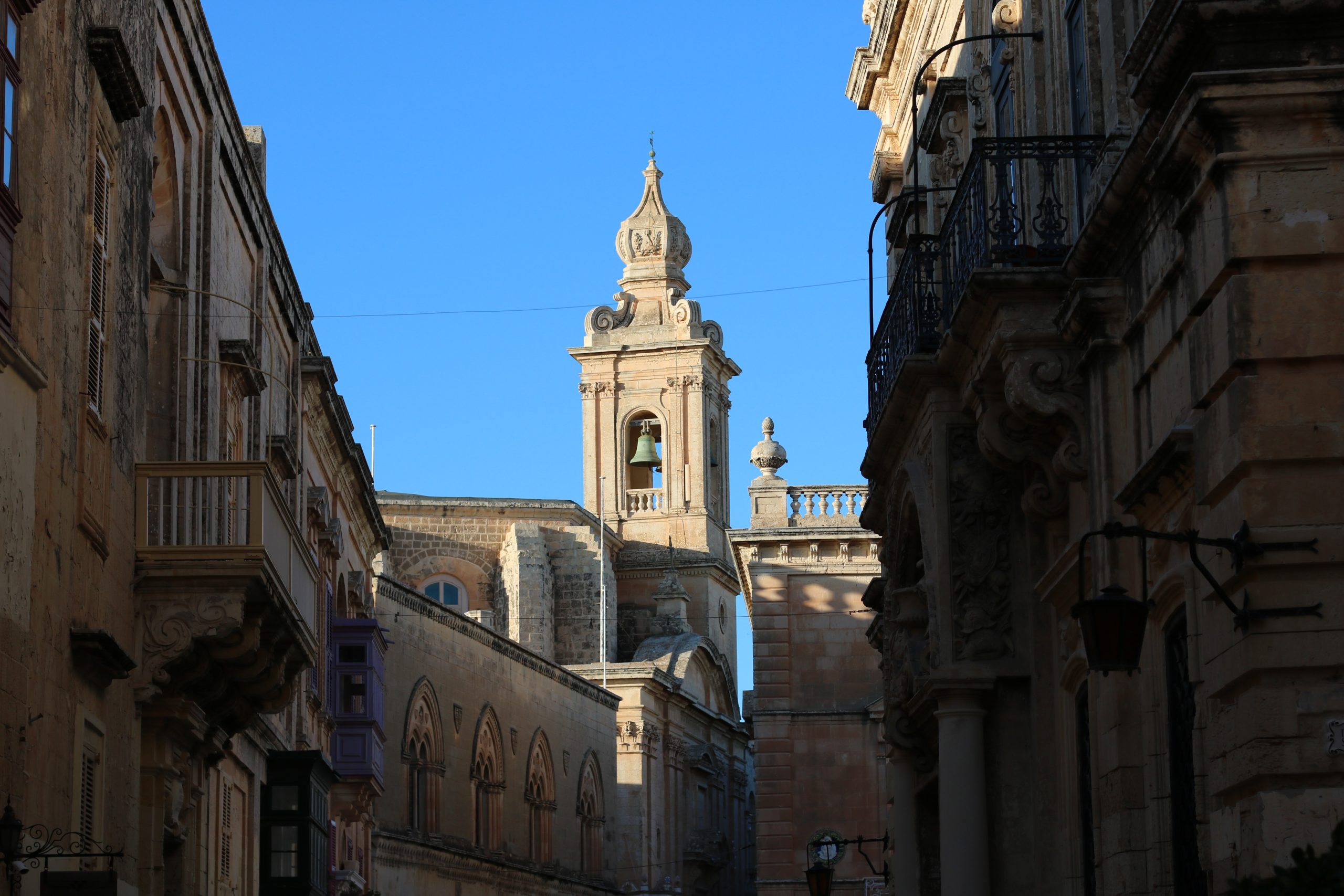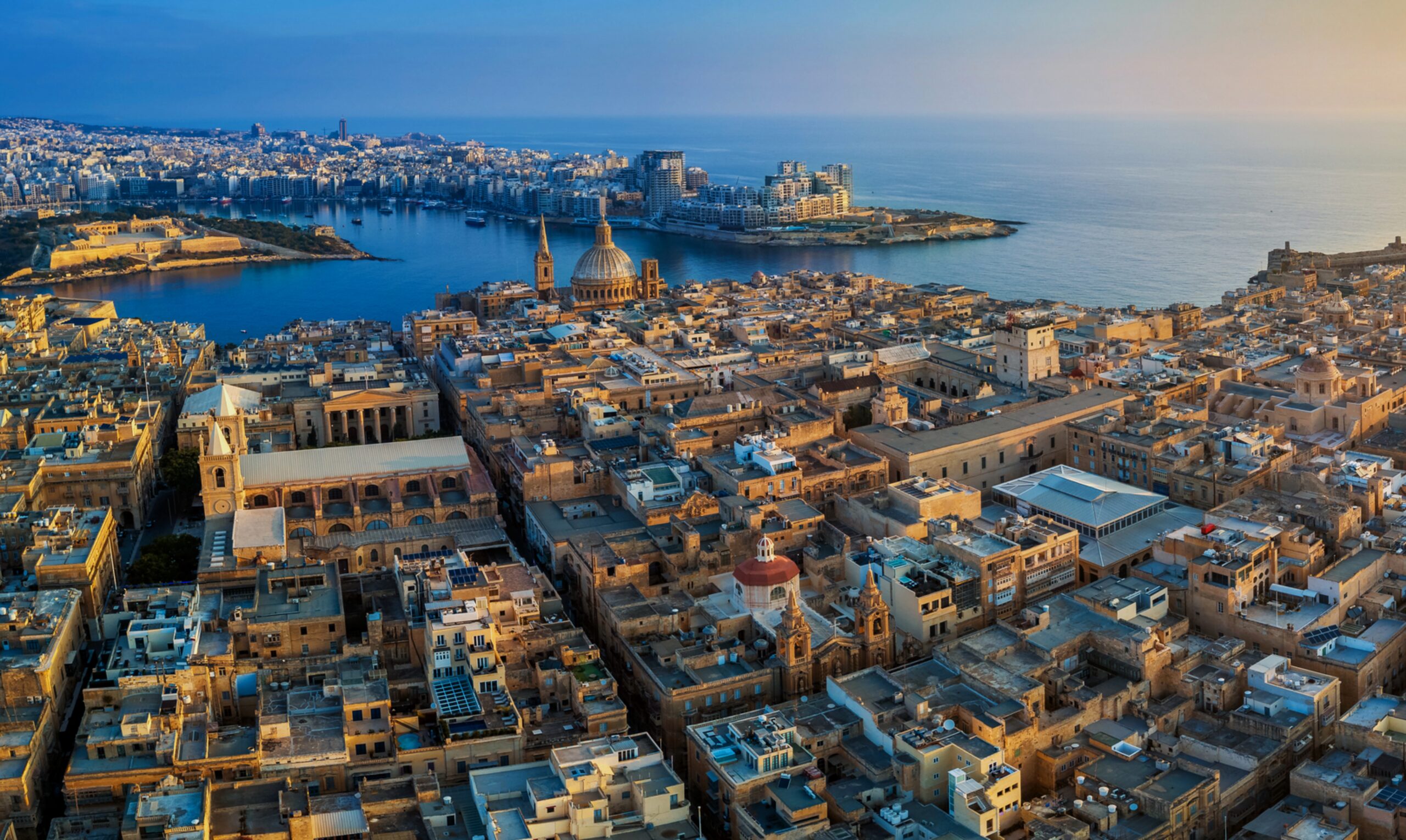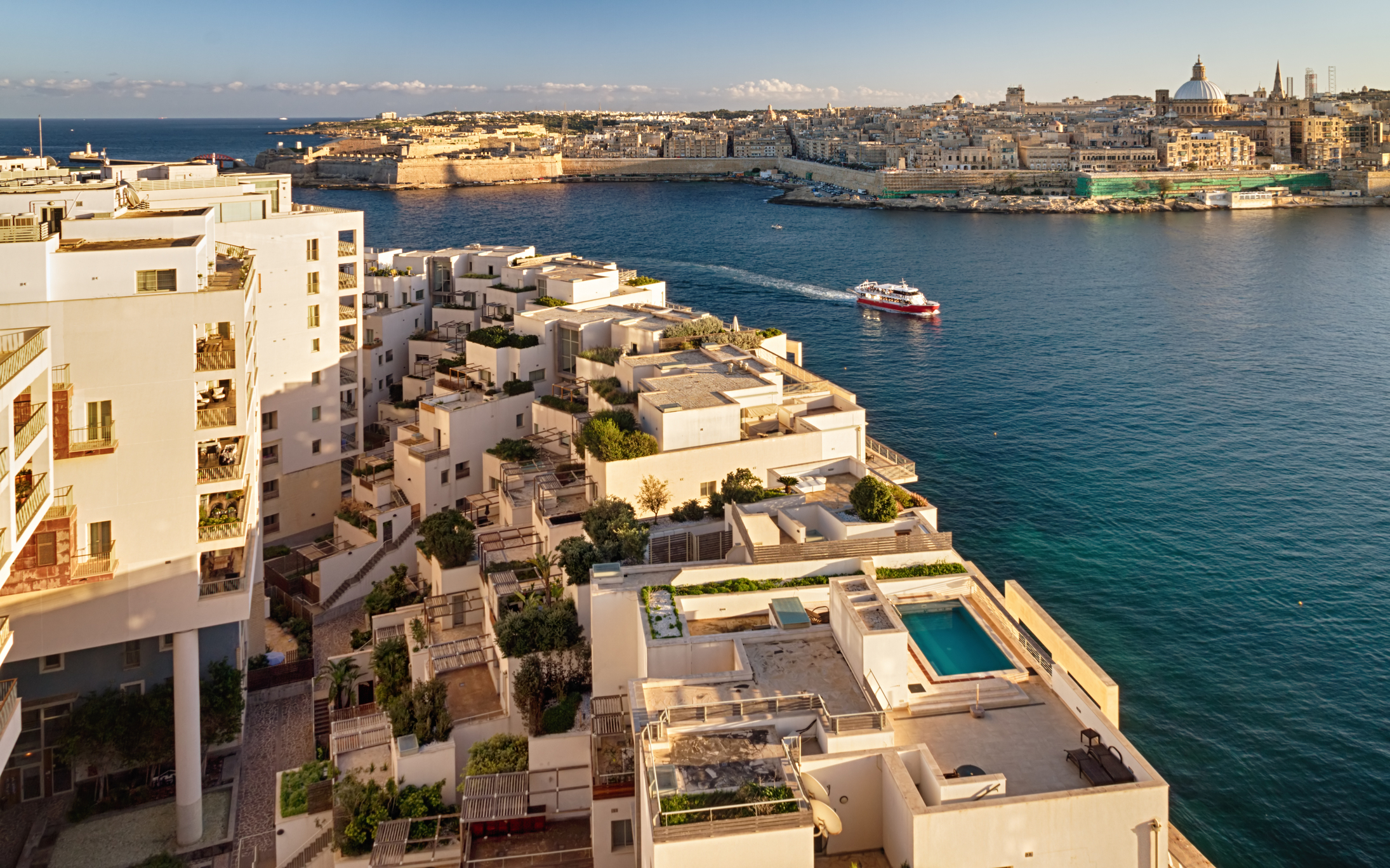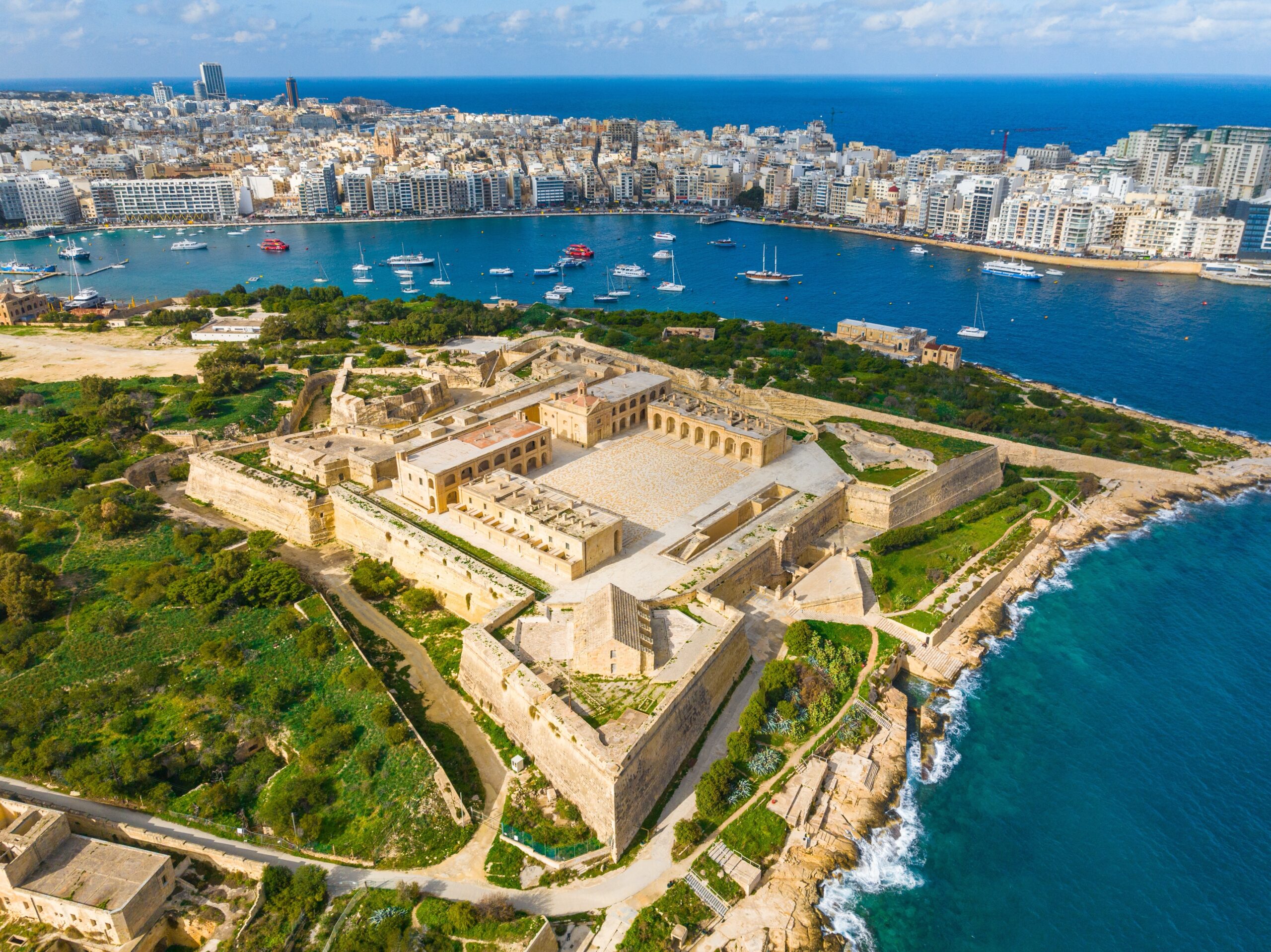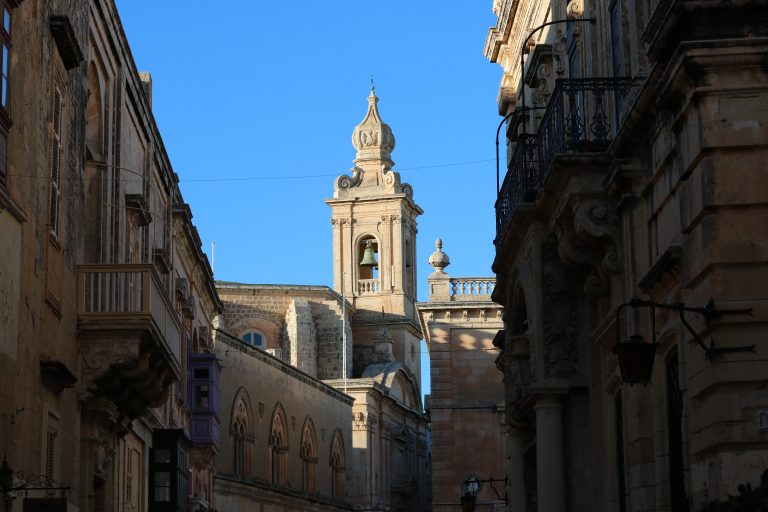
Mdina, or the “Silent City”, as it is known, located in the central part of Malta, commands a magnificent view of the island and although it is fully inhabited, silence reigns supreme. Nobody knows exactly how old Mdina is. It could have been a Bronze Age village built on this hilltop site.
It was known to the Greeks as the Melita (Honeyed One), and was Malta’s capital city until the building of Valletta. It was here that Publius, the leading citizen, welcomed St Paul in AD 60 and was later made the first bishop of Malta.
Thanks to its vast history, beautiful architecture and silence, Mdina is the perfect place to buy and rent property for sale in Malta. Read more about other localities around Malta and Gozo.
The old capital city
Although Valletta is the current capital city of the Maltese islands, back in medieval times, Mdina was the capital city of Malta. The history of Mdina is as old and as chequered as the history of Malta itself. Its origin can be traced back more than 5,000 years. There was certainly a Bronze Age village on this site. It is one of the few remaining Renaissance fortified cities in Europe and in many ways, unique.
Over the years, the city had different names and titles, Melita (which was also the name of the island) and Citta Vecchia (the old city) depending upon who was ruling the island and which role Mdina was playing in the overall power-game. No name or title, however, characterises the city of Mdina so accurately than “Citta Notabile” – The Noble City. Even from a distance, you can sense that “nobility”. This most historical Maltese city is quiet, majestic and sombre. However, Mdina also has tremendous warmth, personified by the friendliness of its people.
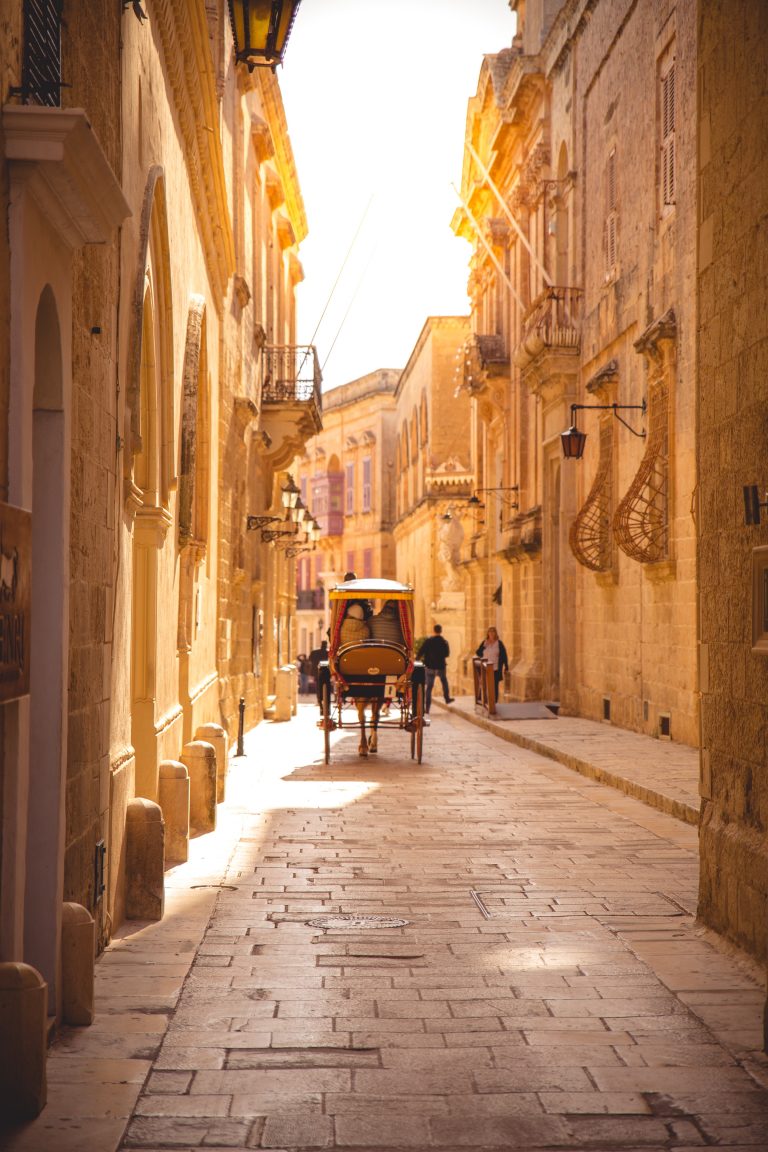
Who built Mdina?
The Phoenicians built a city wall around the locality Mdina and parts of Rabat around 1,000 B.C. They named the City “Malet”, which loosely translates as “shelter” or “protected place”, the same name used for the harbour and island itself. Following the Phoenicians, the Romans called the island “Melita”, a derivation of the Phoenician “Malet”.
It was, however, the Romans who made use of the Mdina plateau and built a town which was three times as big as the present day. Under their rule, the city prospered. Famous poets and politicians of the time, like Cicero, Livy and Diodorus Siculus, described Melita as a town with beautiful buildings and possessing a generous lifestyle. The many relics testify to the style and wealth of the inhabitants. Even today, buried within the walls of simple peasant houses, one can see traces of the stone from ancient Roman pillars and columns, used by the villagers as a cheap source of building material!
It was during this period that St Paul was shipwrecked in Malta in A.D. 60 and was looked after at the Mdina Palace of Publius, the Chief Leader, who was became the first Bishop of Malta.
Mdina and its name
The city received its present name, Mdina, from the Saracens who took over the island in 870 A.D. For reasons of defence, they separated Mdina from Rabat by a deep moat, and surrounded the hilltop section of the city with new, stronger walls and bastions. They called this part of the city “Mdina” which roughly translates as “the city surrounded by walls”. They named the rest of the city “Rabat”, which means suburb. From this time on, Mdina has barely changed. Its structure and street plan is the same as 1,000 years ago.
History of Mdina
After the Normans, Malta and the locality of Mdina had a rather chequered history. By marriage and heritage, it fell under the ownership of different rulers, none of whom really felt responsible for the island and its people. One had other concerns then to care for that “bleak rock”. The local Maltese nobility, having concentrated on Mdina due to its excellent defence possibilities, had to fill this vacuum more and more. Mdina gained importance, especially since the Viceroy of Sicily had granted Mdina the right of internal autonomy, the arm of which was the so-called “Universita”. The “Universita” was an assembly of nobles under the chairmanship of the “Capitano della Verga”, the “Captain of the Rod”, a position which was frequently held by the most powerful Maltese noble family, Inguanez.
The Normans and the nights
In 1090, Count Roger the Norman landed in Malta and was hailed as a liberator as he entered Mdina. Count Roger set about reconstructing the Cathedral which had fallen into ruins during the Arab occupation. This newly magnificent church was dedicated to St Paul, officially mentioned in documents not earlier than 1298.
During the time between the arrival of the Normans in 1100 A.D. and the knights in 1530 A.D., some of the finest buildings in “siculo-norman” style were built in Mdina, some of which are still to be seen today.
After the Great Siege in 1565, the Order of St John decided to build a new capital city – Valletta – and in 1568 Mdina became known as the Citta Vecchia.
Valletta
With the founding of Valletta in 1566 the importance of Mdina decreased, especially since the Knights had usurped many of the rights of the “Universita”. Mdina became the “Citta Vecchia”, the “Old City”. Despite the rising security on the island, Mdina’s population decreased. Everybody wanted to move to Valletta. Attempts were made to stop this migration, but without much success. Grand Master Lascaris finally decided to give up the city once and forever. He planned to destroy the fortifications, dismantle the valuable bronze cannon, and leave the few who wanted to stay to their fate, just in case there was a renewed attack.
However, Lascaris had not taken into account the women of Mdina. When the soldiers attempted to dismantle the cannons, they were ferociously attacked by the women, with brooms and flails, until the Grand Master and his troops were forced to retreat.
From this point on, Grand Master Lascaris became an object of hatred to the women, as he had already incurred their displeasure by prohibiting women to wear masks at carnival time.
The great earthquake
In 1693 an earthquake caused considerable damage to the Island especially to Mdina. Most of the buildings were razed to the ground, including the Cathedral, of which only part of the apse remained. Grand Master Vilhena inaugurated an extensive re-building program which included the rebuilding of the Cathedral, reshaping the main entrance and the reconstruction of Vilhena Palace, now the Museum of Natural History as well as moving the “Universita”, the office of local administration, to Palazzo Giuratale
Reconstruction of the cathedral
By 1694 the reconstruction of the Cathedral had already begun, and became Lorenzo Gafa’s masterpiece. The demolished houses in front of the Cathedral gave way to St Paul’s Square of today. The Magisterial Palace, situated in front of the Cathedral was reconstructed in a magnificent baroque style, and served as a summer residence for Grand Master Vilhena. Everything, from walls to bastions and fortifications was reconstructed and refurbished.
Not wanting to be outdone by the Knights, the local nobles also started to reconstruct their palaces and houses, attempting to re-establish their status and rights in the town. Thus, Mdina rose again in all its previous splendour, although she never regained her former importance as a political and cultural centre.
The French in Malta
In June 1798, the French drove out the knights from Malta, without a single battle, partly due to the fact that over two thirds of the Knights were also French, and therefore refused to fight their fellow countrymen.
Malta surrendered without a shot being fired, as the French had vowed to respect the religion of the Maltese, the right of self-administration or the property of its inhabitants. But despite their promises, the French “confiscated” everything of value from churches and palaces, to fill the war coffers of Napoleon.
The Maltese were furious, and when the French dared to pillage the Carmelite Church of Mdina, the locals stopped them by sheer force. The French General, Masson, was hurled from a balcony. With Masson dead, there was no turning back. The bells rang out the alarm from every belfry, and riot spread, quick as the wind, from city to city, village to village. The French were forced to flee behind the walls of Valletta. From here, they resisted the Maltese aided by a small troop of English soldiers, who came to Malta’s assistance when the Maltese asked Lord Nelson to help them out. The French finally surrendered in 1800.
The British, the last foreign rulers of Malta, dissolved the “Universita” forever, and they turned Valletta into the political and commercial centre of the islands. Mdina is now the “Silent City”, and its vast walls, closed doors and steps which lead nowhere, have become the symbols of the nobility’s chosen reserve. Mdina, the Old City, is a city of all times.
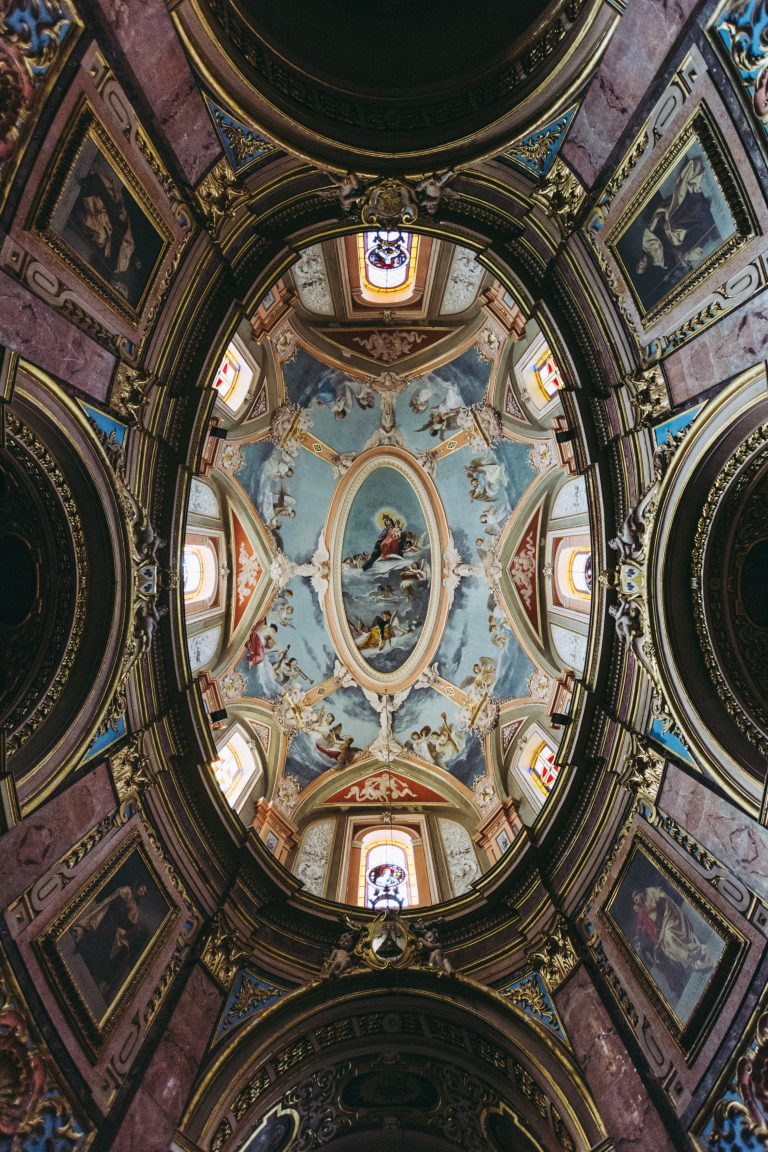
The Mdina Cathedral
The 11th century Siculo-Norman Cathedral was destroyed by an earthquake in 1693. The present Cathedral was built by Lorenzo Gafa four years later and is believed to stand on the site originally occupied by the house of Publius, the Roman Governor, at the time of St. Paul’s stay on the island. Publius eventually became the first Bishop of Malta. The Cathedral Museum contains various art treasures, including a fine collection of Durer woodcuts, paintings and a collection of very rare coins.
Carmelite church & convent
The church and convent of the Order of Carmelite monks was built in 1570 in the city of Rabat. In 1659 the Carmelite Fathers transferred their church and convent to the church of the Blessed Virgin Della Rocca in Mdina. The bells of this church signalled the upraising of the Maltese insurgents against the French in 1798.
During the French rule of Malta the commission nominated 2 September 1798 to sell and auction the tapestries and other valuable objects which were found in the Carmelite Church. The alarm was raised and the people of neighbouring villages rushed to Mdina. Messengers were sent to all villages to announce the rebellion at Rabat to ask for help. The response was overwhelming and soon the French troops were driven out of Mdina and few months later the French rule came to a humiliating end.
National Museum of Natural History
Situated at Vilhena Palace within Mdina, this national museum of natural history houses seven sections of relics comprising of both local and foreign collections. These include skeletal anatomy, fish, insects, birds, shells, fossils and geology.
Mdina Glass
If you wish to see craftsmen at work at the Mdina glass factory at Ta’ Qali. You can see the glass as it is blown and taking shape in the most beautiful colours that are unbelievably attractive.
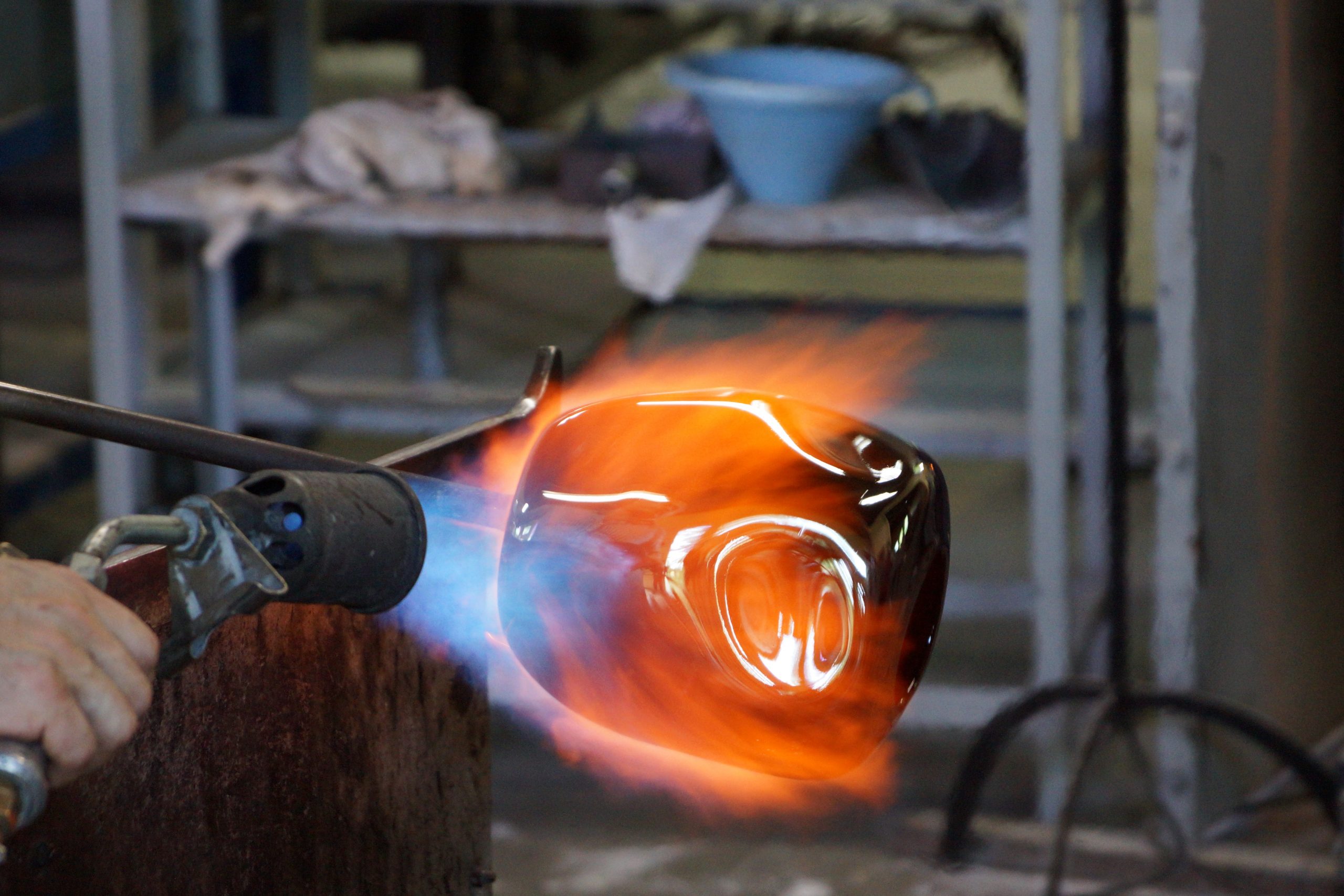
Newsletter Sign Up
Sign Up For Our
Newsletter
Join JK Properties newsletter and be updated with the latest property for sale in Malta.


